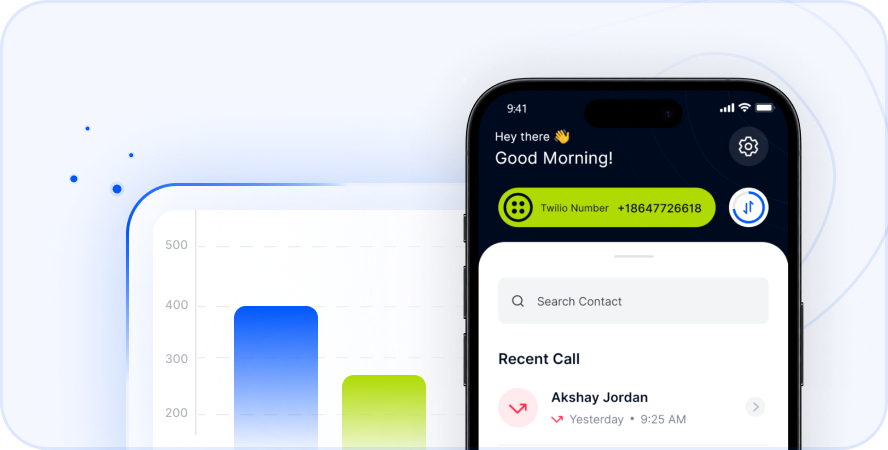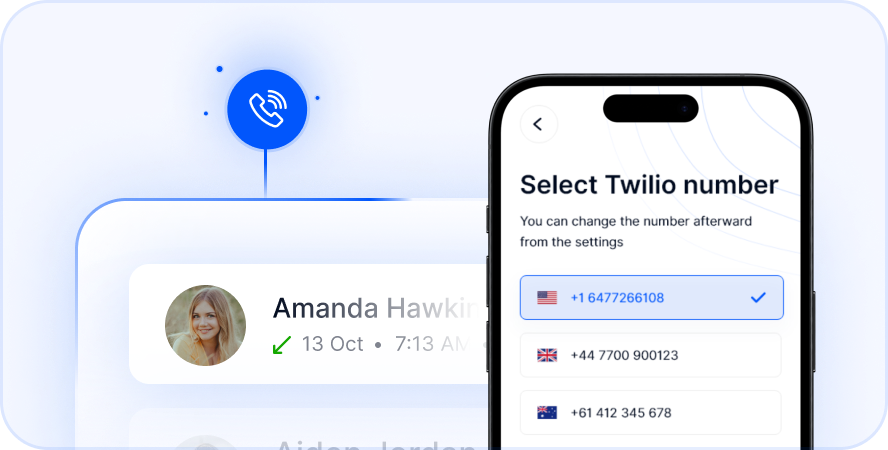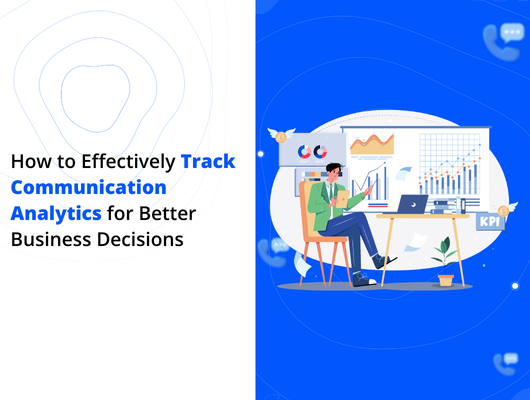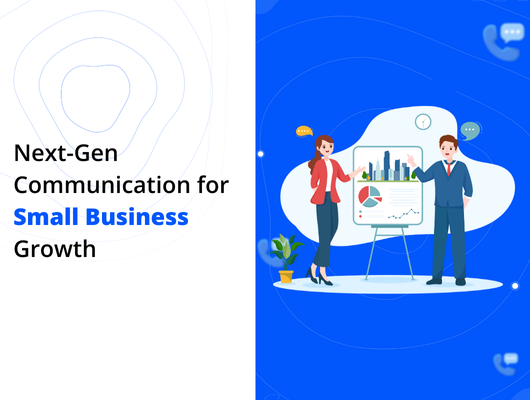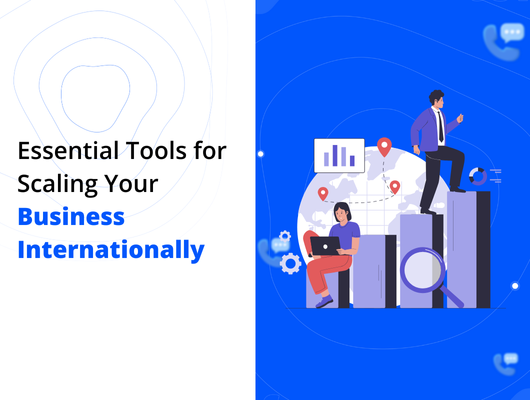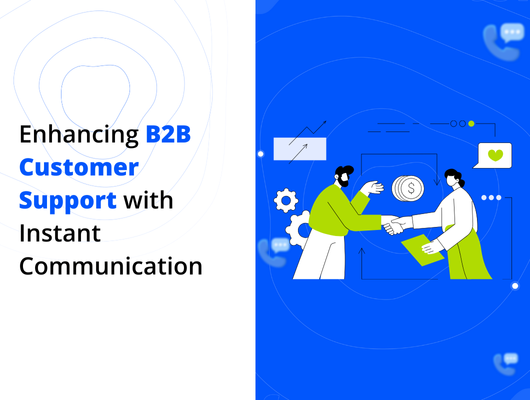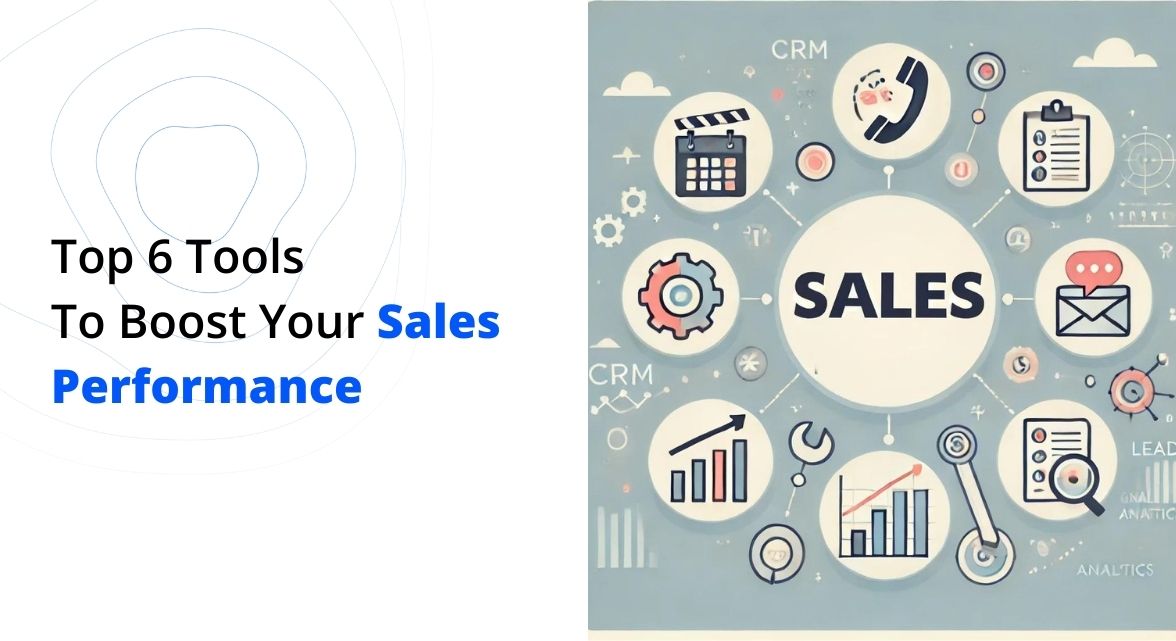
Improving sales performance involves more than increasing activity. It requires working smarter, not just harder. Leveraging the right sales tools can significantly impact your productivity, organization, communication, and ultimately, your ability to close deals. These tools streamline workflows, provide crucial insights, and help you stay competitive in a fast-paced market. Investing in the right technology is a strategic move that empowers your sales team to achieve their full potential and build stronger customer relationships. According to recent reports, companies using sales technology effectively often see higher revenue growth and improved efficiency , explore more to know regarding sales technology.
The modern sales landscape is dynamic. Buyers are more informed and expect personalized interactions. This shift demands that sales professionals adopt tools that facilitate deeper customer understanding and more efficient communication. The following six categories of tools represent essential components of a robust sales technology stack, designed to support every stage of the sales cycle, from initial contact to closing and beyond.
The Foundation: Mastering Your Sales Process
Effective sales performance begins with a clear understanding and management of your pipeline and customer interactions. The right tools provide structure and visibility, acting as the backbone of your sales operations.
1. CRM Software: The Central Nervous System of Sales
A Customer Relationship Management (CRM) system is arguably the single most important tool for any sales team. It serves as a centralized database for all customer and prospect information. From contact details to interaction history, every piece of data is stored and organized within the CRM.
Why a CRM is Indispensable
Think of a CRM as your team’s collective memory and operational hub. It eliminates silos of information and provides a unified view of every lead and customer. This shared access ensures consistency and prevents missed opportunities.
- Comprehensive Contact Management: Store and manage all your leads, prospects, and customers in one place. Track their details, history, and preferences easily.
- Pipeline Visualization: Get a clear view of your sales pipeline. Monitor the progress of each deal from initial contact to closing. Identify bottlenecks and forecast future revenue more accurately.
- Enhanced Customer Understanding: By logging every interaction, you build a rich profile for each contact. This helps your team understand customer needs, challenges, and buying patterns, enabling more personalized outreach.
- Task Automation: Many CRMs offer automation features for repetitive tasks. This includes scheduling follow-ups, sending reminders, and updating deal stages automatically, freeing up valuable selling time.
- Team Collaboration: Facilitate collaboration by sharing customer information and deal progress within the team. Ensure everyone is on the same page regarding account status and next steps.
Popular CRM options include industry leaders like Salesforce, HubSpot CRM, Zoho CRM, Pipedrive, and Microsoft Dynamics 365. When choosing a CRM, consider its scalability, ease of use, and integration capabilities with your existing tools, such as email marketing platforms or communication systems like Telfon.
2. Sales Engagement Platforms: Supercharging Your Outreach
Once you have your data organized in a CRM, sales engagement tools help you actively connect with prospects in a structured and efficient manner. These platforms are designed to automate and optimize the communication process across various channels.
How Sales Engagement Tools Enhance Outreach
These tools empower sales teams to execute personalized outreach campaigns at scale. They take the guesswork out of follow-ups and help maintain consistent communication with a large volume of prospects.
- Automated Sequences: Set up multi-step outreach sequences involving emails, calls, and social touches. The system automatically guides reps through the steps or automates them where possible.
- Multi-Channel Communication: Reach prospects via their preferred channels. Integrate email, phone, SMS, and social media activities within a single platform for a cohesive approach.
- Engagement Tracking: Gain insights into how prospects are interacting with your outreach. Track email opens, clicks, replies, and website activity to gauge interest and determine the best time to follow up.
- Personalization at Scale: Use data from your CRM to personalize messages and outreach steps. This helps create more relevant and engaging communications that resonate with individual prospects.
- A/B Testing and Optimization: Test different messages, subject lines, and sequences to see what performs best. Use the data to continuously refine your outreach strategy and improve response rates.
Leading sales engagement tools include platforms like Outreach, SalesLoft, Groove, Apollo.io, and Yesware. These tools work best when integrated tightly with your CRM to ensure seamless data flow and a unified view of prospect engagement.
Connecting and Communicating Effectively
Sales is inherently a communication-driven profession. Whether you’re interacting with prospects, clients, or your internal team, having reliable and versatile communication tools is non-negotiable for success.
3. Powerful Communication Tools: Bridging the Gap
Effective communication tools are crucial for maintaining strong relationships and ensuring smooth operations. They facilitate timely responses to clients and seamless collaboration within your sales team. Good communication keeps everyone informed and clients feeling supported.
The Importance of Robust Communication Tools
Staying connected is key in sales. Modern communication tools offer flexibility and efficiency, allowing you to connect with people regardless of their location or preferred method of contact.
- Seamless Team Collaboration: Use tools like Slack or Microsoft Teams for quick internal communication. Share updates, ask questions, and collaborate on deals in real-time, fostering a more connected and efficient team environment.
- Versatile Client Reach: Connect with clients through their preferred channels. This could involve traditional phone calls (VoIP), text messages (SMS), or instant messaging platforms like WhatsApp. Offering multiple contact options improves accessibility and responsiveness.
- Enhanced Accessibility: Cloud-based communication tools often allow you to make calls and send messages from various devices. This means you can stay in touch whether you’re in the office, working remotely, or on the go.
- Improved Responsiveness: Being easily reachable through multiple channels enables faster responses to client inquiries. Quick, helpful communication builds trust and can significantly impact a prospect’s decision-making process.
Tools like Telfon, Slack, Microsoft Teams, Zoom, and Google Meet are excellent examples. Telfon stands out by offering a comprehensive suite for client communication, including VoIP calls, SMS, and integrated WhatsApp capabilities, which is particularly useful for international outreach and managing client relationships across different platforms.
4. Lead Generation Tools: Keeping the Pipeline Full
Maintaining a healthy sales pipeline requires a consistent flow of qualified leads. Lead generation tools help sales and marketing teams identify, attract, and capture potential customers efficiently.
How Lead Generation Tools Boost Sales
These tools streamline the process of finding and nurturing prospects. They help you identify individuals and companies that are likely to be interested in your product or service, focusing your efforts on the most promising opportunities.
- Prospect Identification: Use databases and search tools to find contact information for potential leads based on industry, role, company size, and other criteria. Automate the process of building targeted lists.
- Lead Enrichment: Add valuable data to existing leads. Tools can pull in information about a prospect’s company, role, technologies used, and recent news, helping you personalize your outreach.
- Lead Scoring: Assign scores to leads based on their characteristics and behavior (e.g., website visits, email opens). This helps prioritize leads, allowing sales reps to focus on those most likely to convert.
- Website Visitor Identification: Discover which companies are visiting your website, even if they don’t fill out a form. This provides valuable insights into potential interest and allows for targeted follow-up.
- Content Marketing Integration: Some tools integrate with content platforms to track which content pieces leads are engaging with. This helps understand their interests and tailor communication accordingly.
Popular lead generation tools include LinkedIn Sales Navigator, ZoomInfo, Clearbit, Hunter, and Leadfeeder. Implementing these tools ensures your sales team always has a fresh list of potential contacts to reach out to.
Data-Driven Decisions and Efficiency
Successful sales teams rely on data to understand their performance, identify areas for improvement, and make informed strategic decisions. Tools that provide analytics and help manage documentation are essential for efficiency.
5. Sales Analytics & Reporting: Understanding Your Performance
Sales analytics tools transform raw sales data into actionable insights. They provide visibility into performance metrics, identify trends, and help forecast future outcomes. Understanding your data is key to optimizing your sales process.
Benefits of Sales Analytics Tools
These tools offer a window into what’s working and what’s not within your sales operations. They move sales management beyond intuition to data-backed strategies.
- Performance Tracking: Monitor key metrics like conversion rates, deal velocity, revenue per rep, and win rates. Track performance against targets and identify top performers and areas needing coaching.
- Pipeline Health Analysis: Analyze your pipeline to understand where deals are getting stuck. Identify common drop-off points and refine your sales process to move deals forward more effectively.
- Accurate Forecasting: Use historical data and current pipeline status to create more accurate sales forecasts. This is crucial for business planning, resource allocation, and setting realistic goals.
- Identifying Trends: Spot trends in customer behavior, market shifts, or sales performance over time. Use these insights to adapt your strategy and stay ahead of the competition.
- Optimizing Strategies: Test different sales approaches and measure their impact using analytics. Continuously refine your messaging, tactics, and process based on data-driven evidence.
Leading sales analytics platforms include tools like Tableau, Google Data Studio, InsightSquared, Looker, and Microsoft Power BI. Many CRMs and sales engagement tools also include built-in reporting and analytics capabilities.
6. Document Management & E-Signature Tools: Streamlining Operations
Sales processes involve a significant amount of documentation, from proposals and contracts to presentations and product sheets. Efficiently managing these documents is crucial for organization and speed, especially during the closing stage.
Why Document Management and E-Signature Are Important
Poor document management can lead to delays, errors, and frustration for both sales reps and clients. Tools that simplify document handling improve efficiency and professionalism.
- Centralized Storage: Store all sales-related documents in a secure, easily accessible location. This ensures everyone on the team can find the information they need quickly and reduces time spent searching.
- Version Control: Ensure that your team is always using the most up-to-date versions of documents like pricing sheets or proposals. Avoid confusion and potential mistakes caused by outdated files.
- Secure Sharing: Share documents securely with clients and internal teams. Control access permissions and track who has viewed or downloaded specific files.
- Accelerated Closing with E-Signatures: E-signature tools allow clients to sign contracts and agreements electronically. This significantly speeds up the closing process compared to traditional paper-based methods.
- Workflow Automation: Integrate document management with your CRM and other tools to automate tasks like generating proposals or sending documents for signature, reducing manual effort.
Popular tools in this category include Dropbox, Google Drive, DocuSign, PandaDocuSign, PandaDoc, and Adobe Sign are popular tools for managing sales documents.

Why Communication is Key for Sales Performance (and How Telfon Helps)
While all the tools mentioned are vital, effective communication ties everything together. It’s the bridge between your data, your outreach, and your relationships. Being able to connect with prospects and clients easily, reliably, and through their preferred method is a direct driver of sales success. This is where a powerful communication platform plays a critical role.
Telfon is designed specifically to address the communication needs of sales teams and businesses operating globally. It provides a flexible and comprehensive platform for connecting with clients, regardless of where they are located or how they prefer to communicate.
Advantages of Using Telfon for Sales Teams
Telfon offers a unique combination of features that streamline client communication, making it easier to build rapport and close deals.
- Global Reach: Make international calls to over 180+ countries, connecting with clients and partners worldwide. This is essential for businesses with an international customer base.
- Virtual Numbers: Purchase virtual phone numbers from multiple countries simultaneously. This allows you to establish a local presence in key markets, making it easier for international clients to reach you and potentially increasing trust.
- Multi-Channel Communication: Leverage VoIP calls, send and receive SMS, and manage WhatsApp communications all within one platform. This flexibility ensures you can reach clients through their preferred channel, improving engagement and response rates.
- WhatsApp Integration: Telfon’s WhatsApp integration, including the ability to manage multiple WhatsApp accounts, is a powerful feature for sales. It allows teams to efficiently handle customer interactions on this popular messaging platform, which is crucial in many markets.
- Key Sales Features: Benefit from features like call recordings for training and compliance, voicemail with voicemail-to-text transcription for missed calls, call forwarding to ensure calls are never missed, and bulk SMS for targeted outreach or reminders.
- Business-Specific Features: For larger teams, business plans offer advanced features like user analytics, granular dashboard filters, user and number management, call/SMS history logs per user, and budget assignment per user. These features provide oversight and control for sales managers.
- Scalable and Affordable: With pay-as-you-go pricing and potential savings compared to other providers, Telfon offers a cost-effective solution suitable for individuals, small teams, and large companies alike.
- Accessible Platforms: Use Telfon on the go via the Google Play and App Store apps, or from your desktop using the Chrome Web Store application.
By consolidating various communication channels and offering global capabilities, Telfon simplifies sales outreach and follow-up. This increased efficiency and flexibility allow sales teams to focus more time on selling and building relationships.
Frequently Asked Questions (FAQs)
Q1: Which sales tool is the most important?
A: While all tools play a role, a CRM is often considered the foundational tool. It organizes your data and pipeline, which other tools can then leverage to improve outreach and analysis. Communication tools are also critically important as sales relies heavily on interaction.
Q2: Are these sales tools expensive?
A: Pricing varies greatly depending on the tool’s complexity, features, and the number of users. Many tools, especially CRMs and communication platforms like Telfon, offer tiered pricing, including free options for individuals or small teams, and scalable plans for larger businesses. Investing in tools often provides a significant return on investment through increased efficiency and closed deals.
Q3: How do I choose the right tools for my team?
A: Start by assessing your current sales process and identifying pain points. What takes up too much time? Where are you losing leads? What data do you need? Research tools that address these specific needs. Consider your team’s size, budget, technical expertise, and the tool’s ability to integrate with your existing systems. Many tools offer free trials, allowing you to test them before committing.
Q4: Can these tools integrate with each other?
A: Yes, integration is a key consideration. Many modern sales tools are designed to integrate with other platforms, such as CRMs, sales engagement tools, and communication systems. This connectivity creates a seamless workflow and ensures data flows smoothly between different parts of your tech stack. Look for tools that offer APIs or pre-built integrations with the platforms you already use.
Q5: How long does it take to see results from using sales tools?
A: The time frame varies depending on the tool and how effectively it’s implemented and adopted by your team. Some benefits, like improved organization with a CRM, can be seen relatively quickly. Others, like increased conversion rates from optimized outreach sequences or improved forecasting accuracy, may take a few weeks or months as you gather data and refine your approach. Consistent training and usage are key to maximizing results.
Choosing the right set of sales tools is a strategic decision that can significantly boost your sales performance. By investing in technology that helps you manage relationships, automate outreach, communicate effectively, analyze data, and streamline documentation, you empower your sales team to work smarter and close more deals. From the foundational capabilities of a CRM to the versatile communication options provided by platforms like Telfon, each tool contributes to a more efficient and successful sales operation.
Ready to transform your sales performance? Explore the tools discussed and identify where technology can best support your team’s goals. Implementing the right solutions will not only improve efficiency but also enhance the overall experience for both your sale


